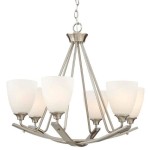Indoor Plant Wall Decor: DIY Ideas for a Green Oasis
Indoor plant wall decor offers an innovative way to integrate the beauty and benefits of nature into interior design. These vertical gardens transform bare walls into vibrant, living artworks, enhancing aesthetics and improving indoor air quality. DIY plant walls are a cost-effective and personalized approach to achieve this, allowing for customization of size, plant selection, and overall design to match individual preferences and available space.
The concept of indoor plant walls, also known as living walls or vertical gardens, has gained significant traction in recent years due to a growing awareness of the positive impact of plants on well-being. These installations not only add visual appeal, but they also contribute to a healthier indoor environment by filtering air pollutants and increasing humidity. Building a DIY plant wall provides an opportunity to connect with nature, engage in a creative project, and create a unique and sustainable design element within a home or office space.
Choosing the Right Location and Structure
The success of a DIY indoor plant wall hinges on selecting the appropriate location and constructing a suitable supporting structure. Light availability is a primary consideration. Most indoor plants require adequate sunlight to thrive. Therefore, a wall that receives natural light, either directly or indirectly, is ideal. If natural light is limited, supplemental grow lights may be necessary to ensure the plants receive sufficient illumination. It is also important to consider the wall's proximity to water sources, as regular watering is essential for maintaining a healthy plant wall. Accessibility for maintenance, such as pruning and fertilizing, should also be factored into the location selection.
The structure that supports the plants can be built using various materials and designs. One common approach involves using a modular system with individual pockets or containers for each plant. These systems are typically constructed from materials like plastic, metal, or recycled materials. Another option is to create a wooden frame and attach fabric or felt panels to hold the plants. The choice of material depends on the desired aesthetic, the weight of the plants, and the structural integrity of the wall. Regardless of the chosen method, it is crucial to ensure that the structure is waterproof or has a proper drainage system to prevent water damage to the wall.
Before beginning construction, the wall should be thoroughly inspected for any existing issues, such as leaks or mold. Addressing these problems beforehand will prevent complications later. It is also recommended to apply a waterproof sealant to the wall to protect it from moisture damage. When attaching the plant wall structure, use appropriate fasteners that can support the weight of the plants and the structure itself. Regularly check the structure for any signs of instability or damage and make necessary repairs promptly.
Selecting the Appropriate Plants
Choosing the right plants is critical for the long-term health and visual appeal of the indoor plant wall. Not all plants are suitable for vertical growth, and factors such as light requirements, humidity needs, and growth habits must be considered. Plants with shallow root systems and a compact growth habit are generally well-suited for plant walls. Succulents, ferns, and various types of trailing plants are popular choices due to their adaptability and aesthetic versatility.
When selecting plants, consider the overall design aesthetic that is desired. For a minimalist look, choose plants with simple foliage and a limited color palette. For a more vibrant and diverse appearance, mix plants with different textures, colors, and growth patterns. Research the specific needs of each plant species to ensure that they are compatible in terms of light, water, and humidity requirements. Grouping plants with similar needs together will simplify maintenance and promote healthy growth.
Popular plant choices for indoor plant walls include:
- Succulents: These drought-tolerant plants are easy to care for and come in a variety of shapes and colors. Echeverias, sedums, and haworthias are excellent choices.
- Ferns: Ferns thrive in humid environments and add a lush, green texture to the plant wall. Maidenhair ferns, staghorn ferns, and bird's nest ferns are well-suited for indoor conditions.
- Trailing Plants: These plants cascade down the wall, creating a visually appealing effect. Pothos, philodendrons, and string of pearls are popular options.
- Air Plants (Tillandsia): These plants do not require soil and can be easily attached to the plant wall structure. They need to be misted regularly to stay hydrated.
- Herbs: Certain herbs, such as mint, basil, and oregano, can be grown in plant walls, adding a functional and fragrant element to the design.
Before planting, check each plant for any signs of pests or diseases. Quarantine any infected plants to prevent the spread of problems to the rest of the plant wall. Use a high-quality potting mix that is well-draining and specifically formulated for the chosen plants. Consider adding slow-release fertilizer to the potting mix to provide nutrients over an extended period.
Maintenance and Care
Maintaining a healthy and thriving indoor plant wall requires consistent care and attention. Regular watering, fertilization, and pruning are essential for ensuring the plants receive the necessary nutrients and stay in optimal condition. Monitoring the plants for signs of pests or diseases and addressing any issues promptly will prevent them from spreading and damaging the entire plant wall.
Watering frequency depends on the specific needs of the plants and the environmental conditions. Generally, the soil should be allowed to dry slightly between waterings. Overwatering can lead to root rot, while underwatering can cause the plants to wilt and dry out. Use a watering can or a spray bottle to evenly distribute water throughout the plant wall. Consider installing a drip irrigation system for larger plant walls to automate the watering process and ensure consistent hydration.
Fertilizing the plants regularly is important for providing them with the nutrients they need to grow and thrive. Use a balanced liquid fertilizer diluted to the recommended strength and apply it during watering. Avoid over-fertilizing, as this can damage the plants. Monitor the plants for signs of nutrient deficiencies, such as yellowing leaves or stunted growth, and adjust the fertilization schedule accordingly.
Pruning is necessary to maintain the shape and size of the plants and to remove any dead or damaged foliage. Use sharp, clean pruning shears to make clean cuts. Regularly inspect the plant wall for any signs of pests or diseases. Common pests that can affect indoor plants include aphids, spider mites, and mealybugs. Treat infestations with insecticidal soap or neem oil. Remove any diseased plants promptly to prevent the spread of infection. Regularly clean the plant wall structure to remove dust and debris. This will improve air circulation and prevent the buildup of mold or mildew.
Proper ventilation is also crucial for the health of the plants. Ensure that there is adequate air circulation around the plant wall to prevent the development of fungal diseases. Open windows or use a fan to improve airflow. Rotate the plants periodically to ensure that they receive even exposure to light. This will prevent them from becoming leggy or growing unevenly. With proper care and attention, an indoor plant wall can thrive for many years, providing a beautiful and sustainable addition to any indoor space.
Beyond the practical aspects of location, structure, plant selection, and maintenance, the aesthetic possibilities of DIY indoor plant walls are extensive. Consider incorporating decorative elements such as driftwood, stones, or moss to enhance the visual appeal. Experiment with different plant arrangements and color combinations to create a unique and personalized design. The plant wall can be a focal point in a room, adding a touch of nature and tranquility to the indoor environment. Furthermore, the process of creating and maintaining a DIY plant wall can be a rewarding and therapeutic experience, fostering a connection with nature and promoting well-being.

10 Ideas For Decorating Your Walls With Plants

23 Gorgeous Plant Wall Ideas For Small And Big Spaces

5 Wall Hanging Plants Decor Ideas Using Indoor For The Front Of Your House Green

14 Urban Jungle Interior Design Ideas For Your Home Extra Space Storage

20 Beautiful Indoor Garden Design Ideas

How To Make Money Plants Wall Hanging Decor Indoor Decoration Ideas Green

10 Easy Ways To Decorate A Large Wall Without Using Framed Art House On Sugar Hill

Diy Wood Slat Plant Wall Casa Watkins Living

15 Diy Wall Decor Ideas For Any Room Cute And That S Simple To Make

Plant Wall Ideas Love Renovations
Related Posts







